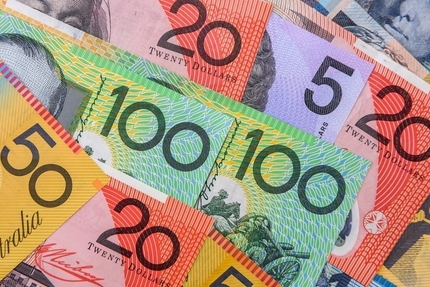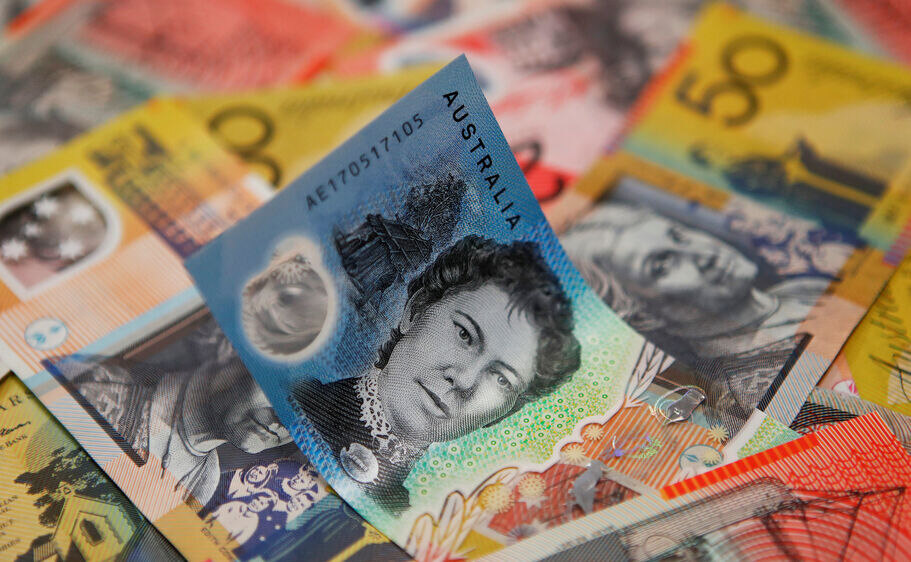Australian Dollar appreciates despite a softer China inflation data


- The Australian Dollar receives support from the hawkish mood surrounding the RBA.
- China’s Consumer Price Index rose by 0.6% YoY in August, up from 0.5% in July but below the market consensus of 0.7%.
- The US Dollar receives support due to rising uncertainty over the likelihood of an aggressive Fed rate cut in September.
The Australian Dollar (AUD) recovers its recent losses against the US Dollar (USD) due to the hawkish sentiment surrounding the Reserve Bank of Australia (RBA). The RBA Governor Michele Bullock stated last week that it is too early to consider rate cuts. The board does not anticipate being able to reduce rates in the near term.
The Australian Dollar remains resilient despite the softer inflation data from China released on Monday. China’s Consumer Price Index (CPI) rose by 0.6% year-on-year in August, up from 0.5% in July but below the market consensus of 0.7%. On a monthly basis, CPI inflation increased by 0.4% in August, down from 0.5% in July and worse than the 0.5% estimate. Given the close trade relationship between Australia and China, any changes in the Chinese economy could have a significant impact on Australian markets.
RBC Capital Markets now expects the Reserve Bank of Australia to implement a rate cut at its February 2025 meeting, earlier than its previous forecast of May 2025. Despite inflation in Australia remaining elevated above the RBA's target, slower economic growth is not considered a sufficient reason for a rate cut this year.
The US Dollar received support as Friday’s US economic data raised uncertainty over the likelihood of an aggressive interest rate cut by the Federal Reserve (Fed) at its September meeting.
According to the CME FedWatch Tool, markets are fully anticipating at least a 25 basis point (bps) rate cut by the Federal Reserve at its September meeting. The likelihood of a 50 bps rate cut has slightly decreased to 29.0%, down from 30.0% a week ago.
Daily Digest Market Movers: Australian Dollar edges higher due to hawkish RBA
- The US Bureau of Labor Statistics (BLS) reported that Nonfarm Payrolls (NFP) added 142,000 jobs in August, below the forecast of 160,000 but an improvement from July’s downwardly revised figure of 89,000. Meanwhile, the Unemployment Rate fell to 4.2%, as expected, down from 4.3% in the previous month.
- Federal Reserve (Fed) Bank of Chicago President Austan Goolsbee remarked on Friday that Fed officials are starting to align with the broader market's sentiment that a policy rate adjustment by the US central bank is imminent, according to CNBC. FXStreet’s FedTracker, which uses a custom AI model to evaluate Fed officials' speeches on a dovish-to-hawkish scale from 0 to 10, rated Goolsbee's comments as dovish, assigning them a score of 3.2.
- ADP Employment Change showed on Thursday that private-sector employment increased by 99,000 in August, following July’s increase of 111,000 and below the estimate of 145,000. Meanwhile, the weekly US Initial Jobless Claims rose to 227,000 for the week ending August 30, compared to the previous reading of 232,000 and below the initial consensus of 230,000.
- Australia’s trade surplus widened to 6,009 million MoM in July, exceeding the expected 5,150 million and 5,589 million in the previous reading.
- US JOLTS Job Openings dropped to 7.673 million in July, down from 7.910 million in June, marking the lowest level since January 2021 and falling short of market expectations of 8.10 million.
- Bank of America (BoA) has revised its economic growth forecast for China, lowering its 2024 projection to 4.8% from the previous 5.0%. For 2025, the forecast is adjusted to 4.5% growth, while the 2026 outlook remains unchanged at 4.5%.
- Australia’s Gross Domestic Product (GDP) posted a 0.2% reading QoQ for the second quarter, up from the previous quarter’s 0.1% but falling short of the expected 0.3% readings.
Technical Analysis: Australian Dollar remains above 50-day EMA near 0.6700
The Australian Dollar trades around 0.6680 on Monday. On the daily chart, the AUD/USD pair remains below the nine-day Exponential Moving Average (EMA), signaling a short-term bearish trend. Additionally, the 14-day Relative Strength Index (RSI) has dropped below the 50 level, further confirming a bearish momentum.
On the downside, the AUD/USD pair is testing immediate support near the 50-day EMA at the 0.6676 level. A decisive break below this point could strengthen the bearish bias, pushing the pair toward the throwback level around 0.6575 . A deeper decline might target the lower support around 0.6470.
In terms of resistance, the AUD/USD pair may encounter a barrier around the nine-day EMA at 0.6720. A break above this level could pave the way for a potential retest of the seven-month high at 0.6798.
AUD/USD: Daily Chart

Australian Dollar PRICE Today
The table below shows the percentage change of Australian Dollar (AUD) against listed major currencies today. Australian Dollar was the strongest against the Japanese Yen.
| USD | EUR | GBP | JPY | CAD | AUD | NZD | CHF |
|---|---|---|---|---|---|---|---|---|
USD |
| 0.02% | -0.04% | 0.39% | -0.08% | -0.19% | -0.11% | 0.07% |
EUR | -0.02% |
| -0.11% | 0.46% | -0.09% | -0.26% | -0.12% | 0.03% |
GBP | 0.04% | 0.11% |
| 0.43% | 0.02% | -0.14% | -0.05% | 0.14% |
JPY | -0.39% | -0.46% | -0.43% |
| -0.50% | -0.59% | -0.55% | -0.16% |
CAD | 0.08% | 0.09% | -0.02% | 0.50% |
| -0.07% | -0.05% | 0.30% |
AUD | 0.19% | 0.26% | 0.14% | 0.59% | 0.07% |
| 0.11% | 0.25% |
NZD | 0.11% | 0.12% | 0.05% | 0.55% | 0.05% | -0.11% |
| 0.17% |
CHF | -0.07% | -0.03% | -0.14% | 0.16% | -0.30% | -0.25% | -0.17% |
|
The heat map shows percentage changes of major currencies against each other. The base currency is picked from the left column, while the quote currency is picked from the top row. For example, if you pick the Australian Dollar from the left column and move along the horizontal line to the US Dollar, the percentage change displayed in the box will represent AUD (base)/USD (quote).




